Table of contents
- Honda Fireblade, Kawasaki Ninja ZX-10R, Suzuki GSX-R 1000, Yamaha YZF-R1 1000s in a racetrack comparison
- Changes to the previous models
- Driving impression Honda Fireblade
- Driving impression Kawasaki Ninja ZX-10R
- Driving impression Suzuki GSX-R 1000
- Driving impression of the Yamaha YZF-R1
- Technical data Honda Fireblade
- Technical data Kawasaki Ninja ZX-10R
- Technical data Suzuki GSX-R 1000
- Technical data Yamaha YZF-R1
- Power and torque diagram
- HP rating Honda Fireblade
- HP rating Kawasaki Ninja ZX-10R
- HP rating Suzuki GSX-R 1000
- HP rating Yamaha YZF-R1
- Conclusion
- Standard tire Michelin Power One
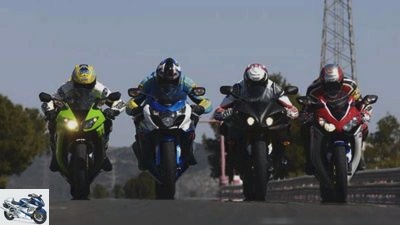
fact
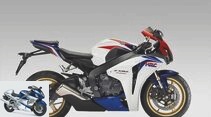
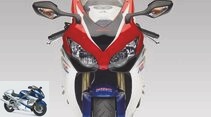
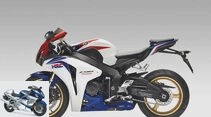
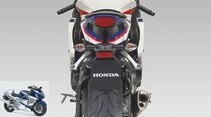
28 pictures
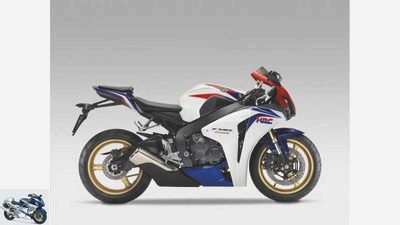
Honda
1/28
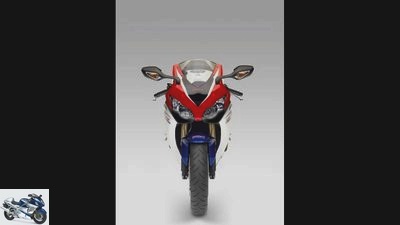
Honda
2/28
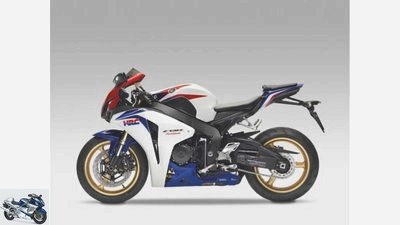
Honda
3/28
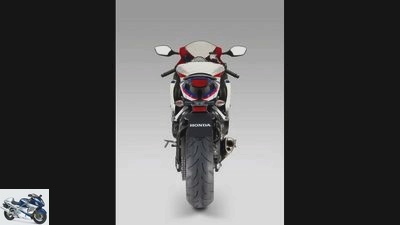
Honda
4/28
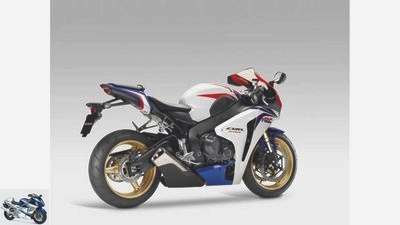
Honda
5/28
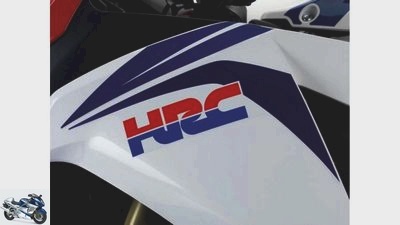
Honda
6/28

Honda
7/28
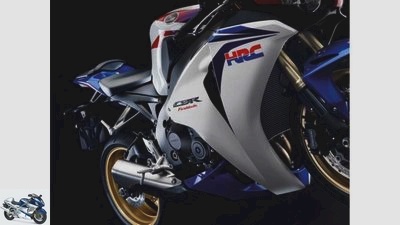
Honda
8/28
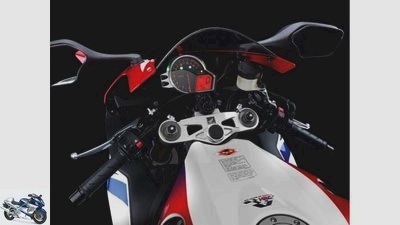
Honda
9/28
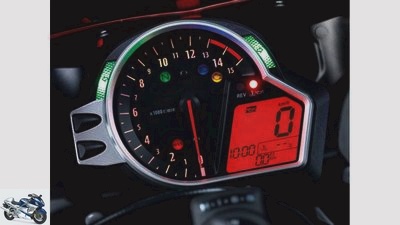
Honda
10/28

Honda
11/28
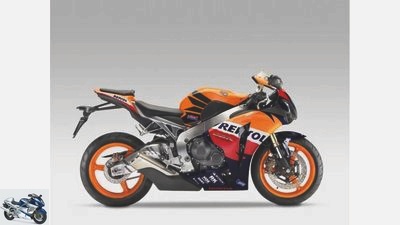
Honda
12/28
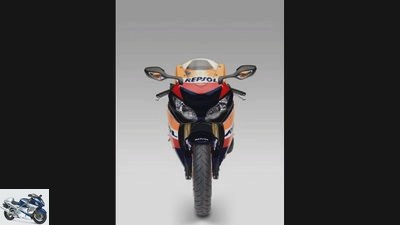
Honda
13/28
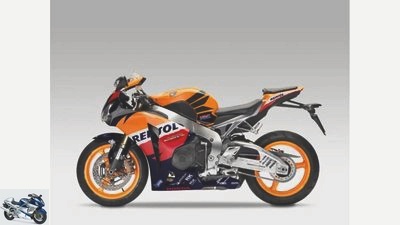
Honda
14/28
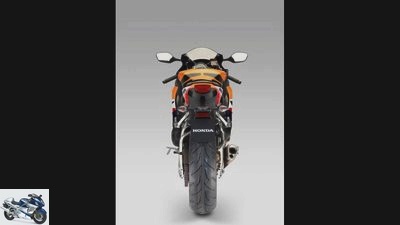
Honda
15/28

Honda
16/28
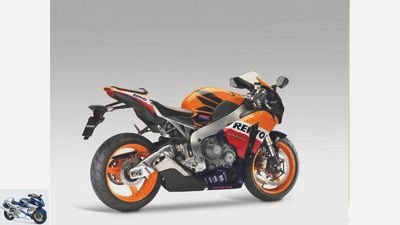
Honda
17/28
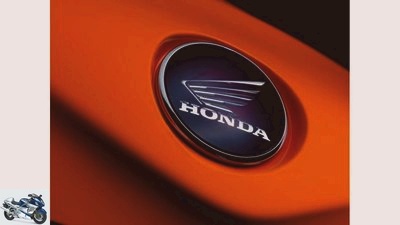
Honda
18/28
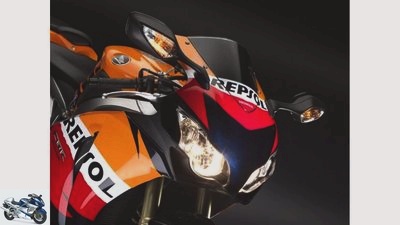
Honda
19/28
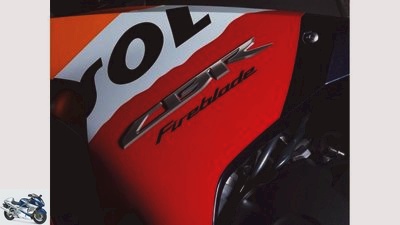
Honda
20/28

Honda
21/28
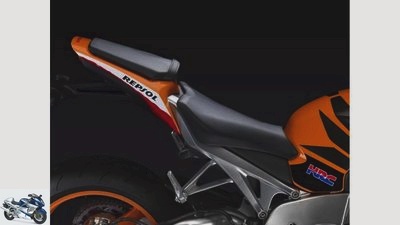
Honda
22/28
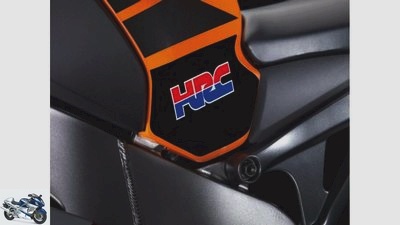
Honda
23/28
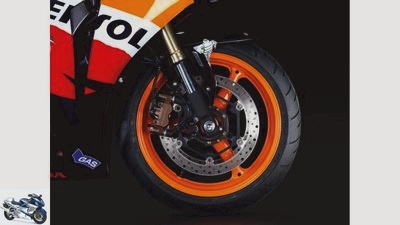
Honda
24/28

Honda
25/28
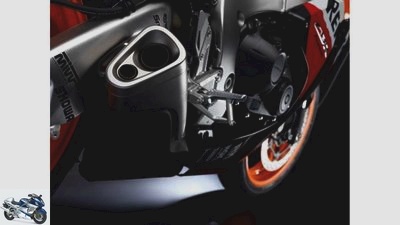
Honda
26/28

Honda
27/28
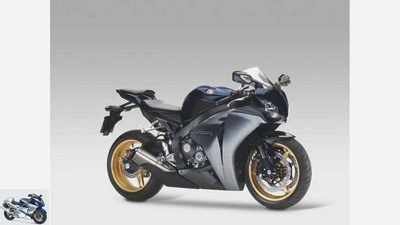
Honda
28/28
motorcycles
Honda Fireblade, Kawasaki Ninja ZX-10R, Suzuki GSX-R 1000, Yamaha YZF-R1
Honda Fireblade, Kawasaki Ninja ZX-10R, Suzuki GSX-R 1000, Yamaha YZF-R1
1000s in a racetrack comparison
Content of
At the start of the season, the horsepower comparison test of the 1000cc four-cylinder superbikes is as sure as the amen in church. Seldom has a race track appointment with the liter beating been so emotionally charged, tricky, breathtaking and amazing as this spring.
Uwe Seitz
05/13/2009
Changes to the previous models
“Paradigm shift” says the expert in grandeur when something throws familiar processes upside down and breaks new ground. This is exactly what the Japanese 1000s are doing this year: their race for even more horsepower and even less weight seems to be over. Before you disappointed now “Ooooch” sigh – it was worth it.
The Yamaha YZF-R1 and Suzuki GSX-R 1000 are completely new in 2009. The Yamaha YZF-R1 has already made a name for itself with its highly individual technology; the Suzuki GSX-R 1000 crept in very quietly, until Max Neukirchner’s parade at the Superbike World Championship opener made it clear that there was obviously something big going on.
Over the years conditioned, higher-faster-further-contemporaries notice that both newcomers have lost performance compared to their predecessors; According to the PS test bench, 5 PS are missing from the previous year’s model. The Suzuki GSX-R 1000 has 4 kilograms less on the ribs than in 2008 and is on the same level as the Kawasaki Ninja ZX-10R. The Honda Fireblade can afford 10 kg extra for the sports ABS and is just behind the two in terms of weight at 209 kg. The Yamaha YZF-R1 even packed 4 kg on it and, at 214 kg, comes in last, beaten by old standards. But weren’t we going to ditch this mindset? Let’s put on uniform tires and get a picture for ourselves!
Over the years conditioned, higher-faster-further-contemporaries notice that both newcomers have lost performance compared to their predecessors; According to the PS test bench, 5 PS are missing from the previous year’s model. The Suzuki GSX-R 1000 has 4 kilograms less on the ribs than in 2008 and is on the same level as the Kawasaki Ninja ZX-10R. The Honda Fireblade can afford 10 kg extra for the sports ABS and is just behind the two in terms of weight at 209 kg. The Yamaha YZF-R1 even packed 4 kg on it and, at 214 kg, comes in last, beaten by old standards. But weren’t we going to ditch this mindset? Let’s put on uniform tires and get a picture for ourselves!
Driving impression Honda Fireblade
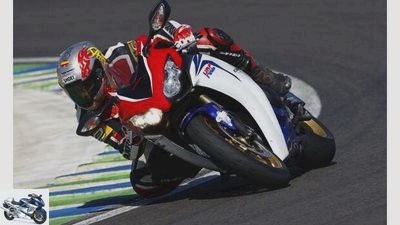
de Diego
Honda Fireblade: 2 best times, fastest lap 1: 30.764 min.
Two copies of each machine are available in Calafat. In 2008 the Honda Fireblade was clearly the parade bike of the big four-cylinder from the Far East, which is why it can present itself: it sits, fits, wobbles and has air – it is very compact and gives its rider a high bed. It can be maneuvered wonderfully through curves with physical effort, steers neutrally, lies stable in long arcs and scurries willingly through alternating curves.
The responsiveness of the suspension elements does not receive any criticism until it is time to brake before the first chicane. At first, the Honda Fireblade cannot cope with the slight bump in the ground, lifts its rear leg like a miniature pinscher when turning on the brakes and ensures that the author stands up in horror, followed by a visit to the gravel bed; some colleagues felt the same way. The very short and light rear of the Honda Fireblade requires a sensitively tuned shock absorber. Noted, done: After that, there was silence.
The brake on the Honda Fireblade is of course an issue. The anti-lock braking system amazes the average hobby racer with its inconspicuousness. Building up pressure and braking progressively is no problem at all – nothing can be felt from the ABS. The driver can now search for the optimal braking point very analytically and with calculable risk, which is incredibly relaxing. However, if you brake on the very last groove and catch the control range, you may be shocked by the brake, which initially opens. Fortunately, the author was spared such a moment; the fastest colleagues were able to vividly describe this phenomenon, which suddenly opened their eyes wide in front of the sea curve.
The smoothly working slipper clutch rocks! Without it, the Honda Fireblade would be even more nervous when braking; the ABS supports them. Even those who brake exclusively at the front, the combined system benefits from an automatically decelerated rear wheel, which is stabilized accordingly. The low braking torque of the motor is noticeable; If you like to work with it, the Honda Fireblade will surprise you with a quickly approaching turn-in point.
The power development of the somewhat rough running engine is impressive. The blade pushes vehemently from the center like a Thai working elephant. The highly praiseworthy electronically controlled steering damper keeps the Honda Fireblade on course when accelerating out. The quadruple’s throttle response continues to cause annoyance. It is tough and messes up the line you are aiming for at the exit of a curve – a shame.
Driving impression Kawasaki Ninja ZX-10R
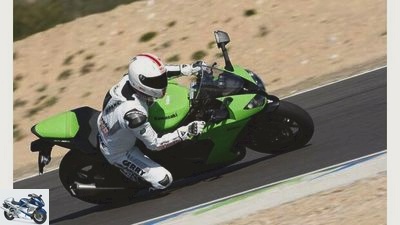
de Diego
Kawasaki Ninja ZX-10R. 1 best time, fastest lap 1: 29.849 min.
<!– ESI FOR ads.BannerGallery / irelements / esielement / eyJwYWdlIjoiL3N0YXJ0c2VpdGUvIiwibGF5b3V0IjoiYXJ0aWNsZSIsImVsZW1lbnQiOiJhZHMuQmFubmVyR2FsbGVyeSIsImlyQ29uZmlnIjoiMTQ3MzI3MjgiLCJwYXJhbXMiOnt9LCJpc01vYmlsZSI6ZmFsc2V9 –> <!– CACHEABLE –>&# 34;,&# 34; rectangle&# 34 ;: “<!–# include virtual = \&# 34 / irelements / esielement / eyJwYWdlIjoiL3N0YXJ0c2VpdGUvIiwibGF5b3V0IjoiYXJ0aWNsZSIsImVsZW1lbnQiOiJhZHMuUmVjdGFuZ2xlR2FsbGVyeSIsImlyQ29uZmlnIjoiMTQ3MzI3MjgiLCJwYXJhbXMiOnt9LCJpc01vYmlsZSI6ZmFsc2V9 \&# 34; –> <!– ESI FOR ads.RectangleGallery / irelements / esielement / eyJwYWdlIjoiL3N0YXJ0c2VpdGUvIiwibGF5b3V0IjoiYXJ0aWNsZSIsImVsZW1lbnQiOiJhZHMuUmVjdGFuZ2xlR2FsbGVyeSIsImlyQ29uZmlnIjoiMTQ3MzI3MjgiLCJwYXJhbXMiOnt9LCJpc01vYmlsZSI6ZmFsc2V9 –> <!– CACHEABLE –>&# 34;,&# 34; sky&# 34 ;: “<!–# include virtual = \&# 34 / irelements / esielement / eyJwYWdlIjoiL3N0YXJ0c2VpdGUvIiwibGF5b3V0IjoiYXJ0aWNsZSIsImVsZW1lbnQiOiJhZHMuU2t5R2FsbGVyeSIsImlyQ29uZmlnIjoiMTQ3MzI3MjgiLCJwYXJhbXMiOnt9LCJpc01vYmlsZSI6ZmFsc2V9 \&# 34; –> <!– ESI FOR ads.SkyGallery / irelements / esielement / eyJwYWdlIjoiL3N0YXJ0c2VpdGUvIiwibGF5b3V0IjoiYXJ0aWNsZSIsImVsZW1lbnQiOiJhZHMuU2t5R2FsbGVyeSIsImlyQ29uZmlnIjoiMTQ3MzI3MjgiLCJwYXJhbXMiOnt9LCJpc01vYmlsZSI6ZmFsc2V9 –> <!– CACHEABLE –>&# 34;}}” ga-track-vis =”article.gallery.inline.vis” class =”v-A_-article__inline-container”>
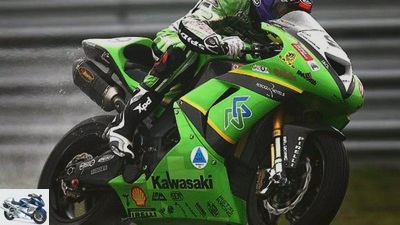
Artist




12th pictures
Images: Honda Fireblade, Kawasaki Ninja ZX-10R, Suzuki GSX-R 1000, Yamaha YZF-R1
go to Article
To home page

Artist
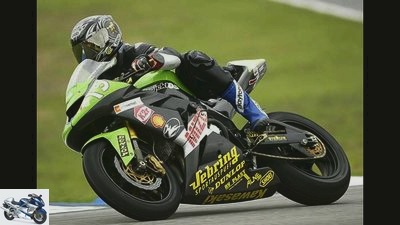
Artist
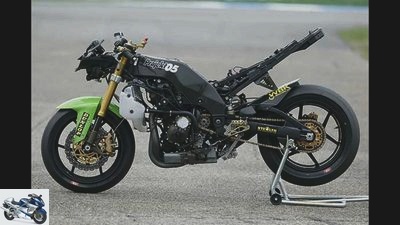
Artist

Artist
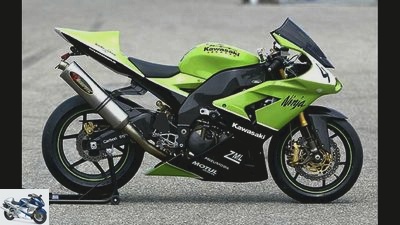
Artist
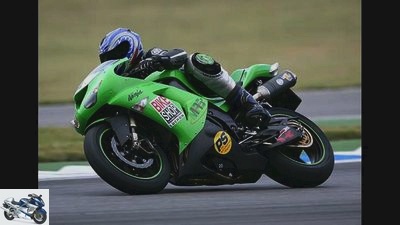
Artist
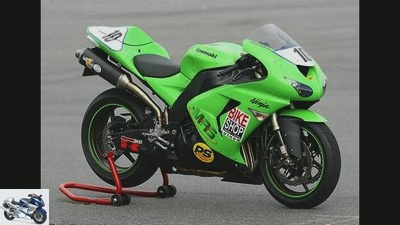
Artist
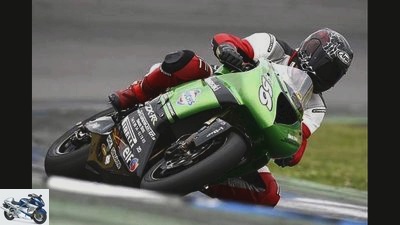
Artist
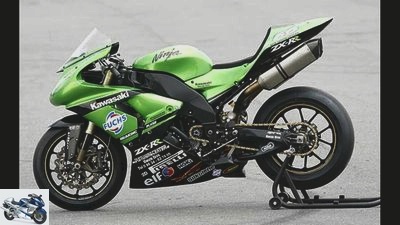
Artist
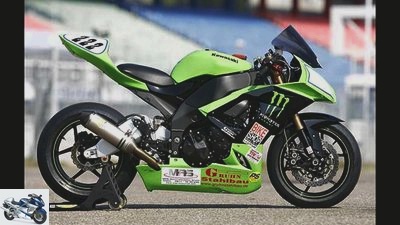
Artist
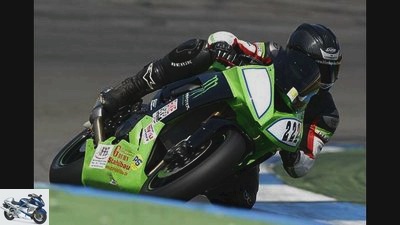
Artist
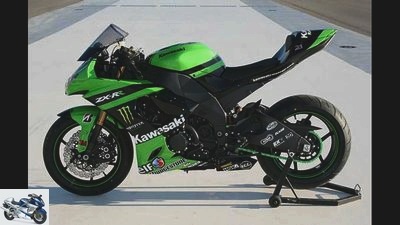
Artist
1/12
The Kawasaki Ninja ZX-10R is much better at throttle response. She gently follows the accelerating command, takes a tiny breather, but then pulls all the more brutally. This consistently speed-oriented, compared to the paradigm shift in the competition, downright conservative sports concept may be annoying on the country road, but it is exactly the right thing on the racetrack.
Incidentally, the easy-to-read gear indicator helps the driver to keep his bearings in the gearbox, which has to be shifted cleanly, at the end of the start / finish straight. This helpful feature has now largely established itself, only the Blde still does without it.
When the green speed demon storms towards the next bend in its brute, somewhat rough-and-tumble way, the front wheel rises permanently; the Ohlins steering damper at least keeps it quiet. The brakes are very reliable: a crisp pressure point, merciless bite and stability over several laps make the biteers of the Kawasaki Ninja ZX-10R a top brake.
The fork responds cleanly, can be compressed powerfully, but with sufficient reserves. The shock absorber reliably presses the rear wheel onto the asphalt; otherwise the stiff chassis works flawlessly. The Kawasaki Ninja ZX-10R only needs a little more pressure to be comfortable in an inclined position. In curves she likes to go a little further and would like to be touched harder to correct course. Otherwise it is full and shows good handling in the meandering infield on the racing tires. Only the low sitting position is inactive.
Driving impression Suzuki GSX-R 1000
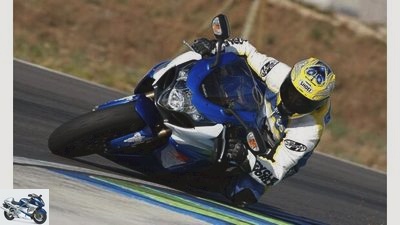
de Diego
Suzuki GSX-R 1000. 3 best times, fastest lap 1: 29.515 min.
Thunderstorm, the established ones set the bar pretty high. Now the newbies are allowed to go – first the Suzuki GSX-R 1000. It has become more compact thanks to its new engine; everything seems to have gathered between the front wheel and the end of the tank. Correspondingly brawny, the motorcycle appears between the rider’s legs, the stubs are steeply down. It comes across as mean and aggressive.
But the engine does not know how to crack wildly: the Suzuki GSX-R 1000 takes the work command from the accelerator hand even more gently than the Kawasaki. Instead of green reluctance, she immediately lets a propulsion follow that could make the brain slosh – unbelievable how fat this thing attracts. At medium speeds, fine vibrations flit through to the driver, but quickly disappear again on the way to maximum speeds. And it goes on until the shift light warns to change gears; Squeaky clean work – from the coal cellar to the roof terrace!
The Suzuki GSX-R 1000 is already flying into the first bend, dipping into the Michelin Pilot Power surprisingly willingly, even looking a little nervous. This becomes clear in the changing curves behind the paddock. It wants to be angled and guided in a targeted manner, otherwise you will find yourself straight on and not close to the curbs – this is probably due to the tires. In any case, after the first round of getting used to it, it ensures that you click your tongue with pleasure. Almost like a 600, it does its job – the lightness of being. The Suzuki GSX-R 1000 can be drawn playfully on ridiculously tight curves; this allows you to accelerate very early in the Omega.
The feeling for the front wheel with the big piston fork is good, at most their response behavior could be a bit finer – R1 and Blade are a nose length better here, the Kawa at least on the same level. At the rear, the Suzuki GSX-R 1000 occasionally has difficulties, even if the current shock absorber is much tighter than the copy from last year’s Suzuki. After fast corners, in which the motorcycle takes a lot of momentum, the Suzuki GSX-R 1000 pumps clearly at the rear. If there are bumps like those when accelerating out onto the start / finish straight, the load wobbles noticeably.
Especially in this fastest section of the route, the otherwise impeccable gearbox caused a few head shakes. When shifting up to fifth gear without the clutch, the Suzi cogwheels occasionally refused to perform the very last step. The great anti-hopping clutch moved in the subsequent, very short braking section with a clear movement “Clone”-Noises and twitches on the lever. Compared to the competition, this is an unproblematic but remarkable unique selling point.
The brakes provided some discussion material for the test team. The stoppers of the Suzuki GSX-R 1000 are certainly not the best in the field, after a few laps they even looked quite blunt. However, in the further course of the test drives they somehow found their way back to their old strength, decelerated appropriately without throwing the very heavy anchor, and remained nicely controllable. All in all, a sensational debut for the new one.
Driving impression of the Yamaha YZF-R1
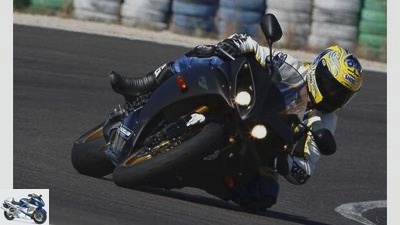
de Diego
Yamaha YZF-R1. 2 best times, fastest lap 1: 30.414 min.
Then she’s waiting Yamaha YZF-R1. From afar, it growls audibly on the track. The irregular firing order of the Yamaha trumpets a unique soundscape – this is guaranteed to be the summer hit of the year.
Kommod embeds the Yamaha YZF-R1 its driver. The wide handlebars suggest sedate; Sportiness with the ultimate consequence is not – no comparison to the little sister R6. But the Yamaha YZF-R1 pushes forward powerfully and gives the driver a limitless feeling of power, or better: feasibility. It’s hard to describe how much the sound contributes – probably a lot. Although the Yamaha YZF-R1 is the weakest of the four-man club almost across the entire rev range, the others never feel so powerful. This can be soberly explained with the relatively short translation, which ultimately gives the Yamaha YZF-R1 the best torque values.
Not quite as gruff as the Fireblade, but a little rough, the Yamaha YZF-R1 takes the throttle with the electronic handle. Then a harmonious propulsion develops, which has no comparison to its predecessor and which manifests itself in every tiny twist of the throttle. Before you know it, you have to change gears in the impeccable gearbox.
When entering a curve, the Yamaha YZF-R1 is a real weapon. None of the others can be bent so easily and runs so precisely and neutrally into the round. Like the proverbial knife through butter, the Yamaha twists into pleasure. The front wheel seems to guide the entire load as if on rails. Clear signals come from the rear of what is possible and what is possible. The omega is the parade curve of the R1, folded down low and as if stapled stable, it completes this section and immediately pushes resolutely onto the next straight. The front wheel likes to twitch; the steering damper does not always work optimally.
Then a bit of disillusionment in the infield. The Yamaha YZF-R1 is not too nimble – probably a result of the heavy rear end with the two mufflers, magnesium or not. Possibly something could be improved in this point by further pre-tensioning at the stern; the second test specimen hung deeper in the back and required a lot more strength due to the tight alternating curves. Nevertheless, the Yamaha YZF-R1 dances all in all very well.
Their brakes are beyond reproach. Hallelujah what a delay! Finely dosed, reliable in the pressure point, aggressive in the bite. This is a great way to slow down the Yamaha YZF-R1. It is particularly clear how comfortable – i.e. soft – the chassis is designed: the fork is deeply immersed, and when the weight is transferred, the rider quickly crouches very close to or almost on the fork bridge.
Technical data Honda Fireblade

de Diego
Honda Fireblade.
Honda Fireblade
Drive: Four-cylinder in-line engine, 4 valves / cylinder, 131 kW (178 PS) at 11200 / min *, 112 Nm at 8500 / min *, 1000 cm³, bore / stroke: 76.0 / 55.1 mm, compression ratio: 12.3 : 1, ignition / injection system, 46 mm throttle valves, mechanically operated multi-disc oil bath anti-hopping clutch, six-speed gearbox, G-Kat
Landing gear: Light alloy bridge frame, steering head angle: 66.8 degrees, caster: 96 mm, wheelbase: 1410 mm, upside-down fork, Ø fork inner tube: 43 mm, adjustable in spring base, rebound and compression stage, central spring strut with deflection, adjustable in spring base, Rebound and compression stage, spring travel v./h .: 120/135 mm
Wheels and brakes: Light alloy cast wheels, 3.5 x 17″/6.00 x 17″, Front tires: 120/70 ZR 17, rear: 190/50 ZR 17. First tires: Bridgestone BT 015 “F.”. 320 mm double disc brake with four-piston fixed calipers at the front, 320 mm single-disc brake with single-piston floating caliper at the rear
Measurements and weight: Length / width / height: 2090/830/1130 mm, seat / handlebar height: 815/860 mm, handlebar width: 650 mm, 209 kg fully fueled, v./h .: 51.8 / 48.2%
Rear wheel power in last gear: 120.8 kW (164 PS) at 257 km / h
Driving performance: Acceleration 0-100 / 150/200 km / h: 3.3 / 5.2 / 7.5 s, pulling speed 50-100 / 100-150 km / h: 4.5 / 3.6 s
Top speed: 293 km / h *
Consumption: Fuel type: Super, average consumption: 8.3 liters / 100 km, tank capacity: 17.7 liters, range: 213 km
Base price: 14 790 euros (plus ancillary costs, C-ABS 1000 euros surcharge, HRC paintwork 100 euros, Repsol paintwork 500 euros)
* Factory specification
| Setup Honda Fireblade |
Technical data Kawasaki Ninja ZX-10R
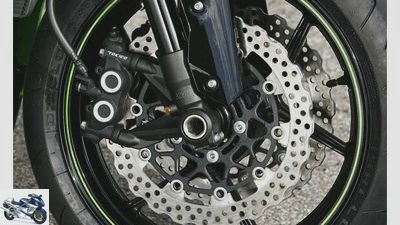
de Diego
Kawasaki Ninja ZX-10R.
Kawasaki Ninja ZX-10R
Drive: Four-cylinder in-line engine, 4 valves / cylinder, 138 kW (188 hp) at 12500 / min *, 113 Nm at 8700 / min *, 998 cm³, bore / stroke: 76.0 / 55.0 mm, compression ratio: 12.9 : 1, ignition / injection system, 43 mm throttle valves, mechanically operated multi-disc oil bath anti-hopping clutch, six-speed gearbox, G-Kat
Landing gear: Light alloy bridge frame, steering head angle: 64.5 degrees, caster: 110 mm, wheelbase: 1415 mm. Upside-down fork, Ø fork inner tube: 43 mm, adjustable in spring base, rebound and compression. Central spring strut with deflection, adjustable in spring base, rebound and compression stage (high and low speed). Spring travel v./h .: 120/125 mm
Wheels and brakes: Light alloy cast wheels, 3.50 x 17″/6.00 x 17″, Front tires: 120/70 ZR 17, rear: 190/55 ZR 17. First tires: Pirelli Diablo Corsa III, front “N”. 310 mm double disc brake with four-piston fixed calipers at the front, 220 mm single disc with single-piston floating caliper at the rear
Measurements and weight: Length / width / height: 2120/840/1130 mm, seat / handlebar height: 820/860 mm, handlebar width: 650 mm, 208 kg fully fueled, v./h .: 50.7 / 49.3%
Rear wheel power in last gear: 124 kW (169 PS) at 275 km / h
Driving performance: Acceleration 0-100 / 150/200 km / h: 3.2 / 5.2 / 7.6 s, pulling speed 50-100 / 100-150 km / h: 5.4 / 4.2 s
Top speed: 298 km / h *
Consumption: Fuel type: Super, average consumption: 8.6 liters / 100 km, tank capacity: 17 liters, range: 198 km
Base price: 13645 Euro (plus additional costs)
* Factory specification
| Setup Kawasaki Ninja ZX-10R |
Technical data Suzuki GSX-R 1000
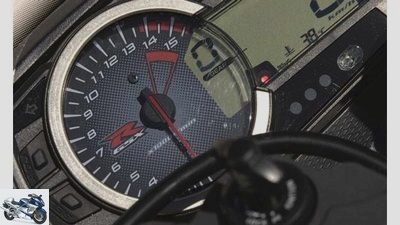
de Diego
Suzuki GSX-R 1000.
Suzuki GSX-R 1000
Drive: Four-cylinder in-line engine, 4 valves / cylinder, 136 kW (185 PS) at 12000 / min *, 117 Nm at 10000 / min *, 999 cm³, bore / stroke: 74.5 / 57.3 mm, compression ratio: 12.5 : 1, ignition / injection system, 44 mm throttle valves, mechanically operated multi-disc oil bath anti-hopping clutch, six-speed gearbox, G-Kat
Landing gear: Light alloy bridge frame, steering head angle: 66.5 degrees, caster: 98 mm, wheelbase: 1405 mm, upside-down fork, Ø fork inner tube: 43 mm, adjustable in spring base, rebound and compression level. Central spring strut with deflection, adjustable in spring base, rebound and compression stage (high / low speed), spring travel v./h .: 125/130 mm
Wheels and brakes: Light alloy cast wheels, 3.50 x 17″/6.00 x 17″, Front tires: 120/70 ZR 17, rear: 190/50 ZR 17, initial tires: Bridgestone BT 016 “N”, 310 mm double disc brake with four-piston fixed calipers at the front, 220 mm single disc with single-piston floating caliper at the rear
Measurements and weight: Length / width / height: 2120/970/1150 mm, seat / handlebar height: 810/860 mm, handlebar width: 635 mm, 208 kg fully fueled, v./h .: 51.0 / 49.0%
Rear wheel power in last gear: 120 kW (163 PS) at 251 km / h
Driving performance: Acceleration 0-100 / 150/200 km / h: 3.2 / 5.2 / 7.6 s Pull-through 50-100 / 100-150 km / h: 4.5 / 4.1 s
Top speed: 295 km / h *
Consumption: Fuel type: Super, average consumption: 8.5 liters / 100 km, tank capacity (of which reserve): 17.5 / 4.6 liters, range: 206 km
Base price: 13890 Euro (plus additional costs)
* Factory specification
| Setup Suzuki GSX-R 1000 |
Technical data Yamaha YZF-R1
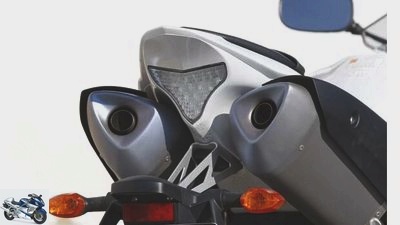
de Diego
Yamaha YZF-R1.
<!– ESI FOR ads.BannerGallery / irelements / esielement / eyJwYWdlIjoiL3N0YXJ0c2VpdGUvIiwibGF5b3V0IjoiYXJ0aWNsZSIsImVsZW1lbnQiOiJhZHMuQmFubmVyR2FsbGVyeSIsImlyQ29uZmlnIjoiMTQ3MzI3MjgiLCJwYXJhbXMiOnt9LCJpc01vYmlsZSI6ZmFsc2V9 –> <!– CACHEABLE –>&# 34;,&# 34; rectangle&# 34 ;: “<!–# include virtual = \&# 34 / irelements / esielement / eyJwYWdlIjoiL3N0YXJ0c2VpdGUvIiwibGF5b3V0IjoiYXJ0aWNsZSIsImVsZW1lbnQiOiJhZHMuUmVjdGFuZ2xlR2FsbGVyeSIsImlyQ29uZmlnIjoiMTQ3MzI3MjgiLCJwYXJhbXMiOnt9LCJpc01vYmlsZSI6ZmFsc2V9 \&# 34; –> <!– ESI FOR ads.RectangleGallery / irelements / esielement / eyJwYWdlIjoiL3N0YXJ0c2VpdGUvIiwibGF5b3V0IjoiYXJ0aWNsZSIsImVsZW1lbnQiOiJhZHMuUmVjdGFuZ2xlR2FsbGVyeSIsImlyQ29uZmlnIjoiMTQ3MzI3MjgiLCJwYXJhbXMiOnt9LCJpc01vYmlsZSI6ZmFsc2V9 –> <!– CACHEABLE –>&# 34;,&# 34; sky&# 34 ;: “<!–# include virtual = \&# 34 / irelements / esielement / eyJwYWdlIjoiL3N0YXJ0c2VpdGUvIiwibGF5b3V0IjoiYXJ0aWNsZSIsImVsZW1lbnQiOiJhZHMuU2t5R2FsbGVyeSIsImlyQ29uZmlnIjoiMTQ3MzI3MjgiLCJwYXJhbXMiOnt9LCJpc01vYmlsZSI6ZmFsc2V9 \&# 34; –> <!– ESI FOR ads.SkyGallery / irelements / esielement / eyJwYWdlIjoiL3N0YXJ0c2VpdGUvIiwibGF5b3V0IjoiYXJ0aWNsZSIsImVsZW1lbnQiOiJhZHMuU2t5R2FsbGVyeSIsImlyQ29uZmlnIjoiMTQ3MzI3MjgiLCJwYXJhbXMiOnt9LCJpc01vYmlsZSI6ZmFsc2V9 –> <!– CACHEABLE –>&# 34;}}” ga-track-vis =”article.gallery.inline.vis” class =”v-A_-article__inline-container”>
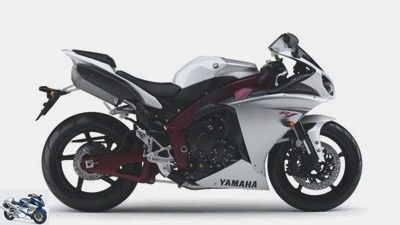
Yamaha




33 pictures
Images: Honda Fireblade, Kawasaki Ninja ZX-10R, Suzuki GSX-R 1000, Yamaha YZF-R1
go to Article
To home page
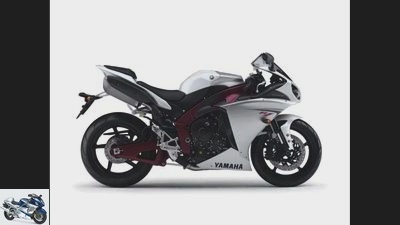
Yamaha
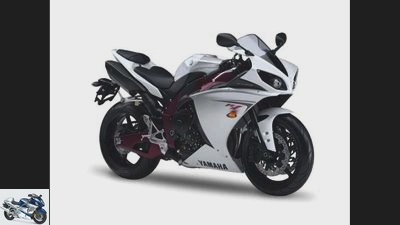
Yamaha
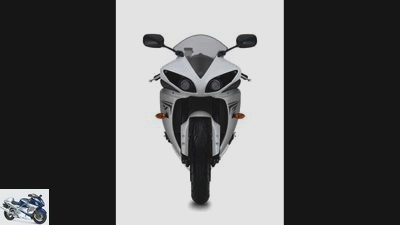
Yamaha
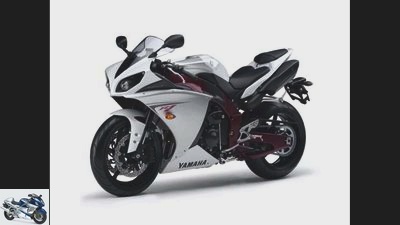
Yamaha
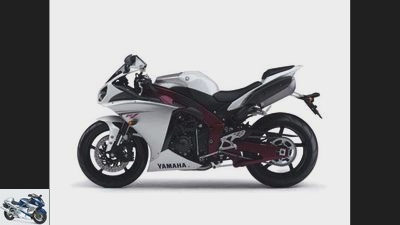
Yamaha
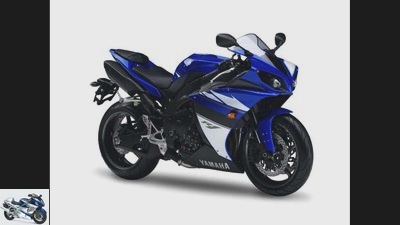
Yamaha
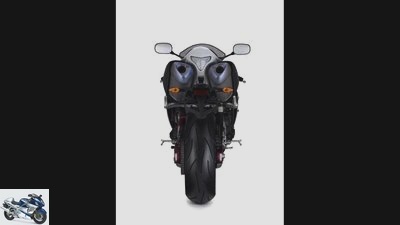
Yamaha
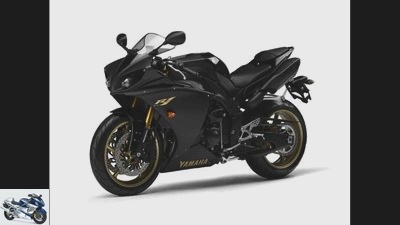
Yamaha
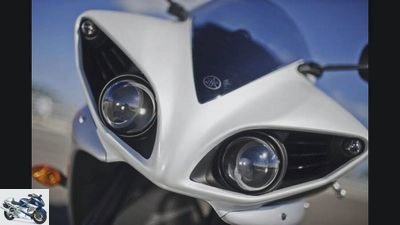
Yamaha
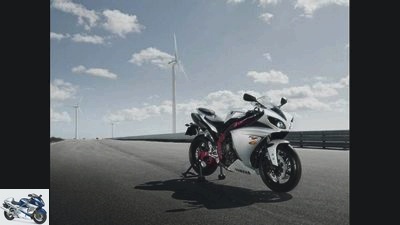
Yamaha
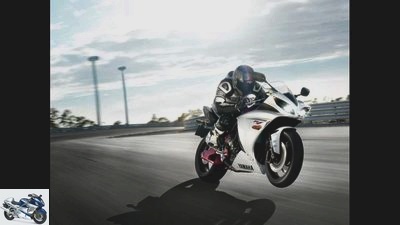
Yamaha

Yamaha
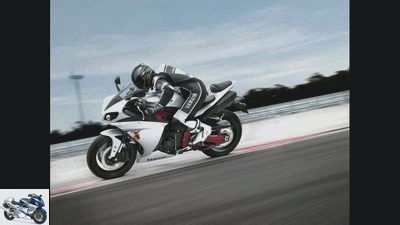
Yamaha
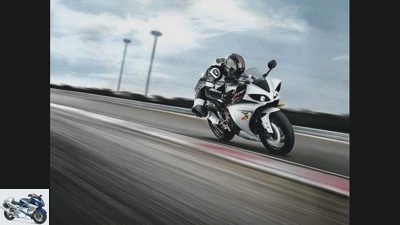
Yamaha
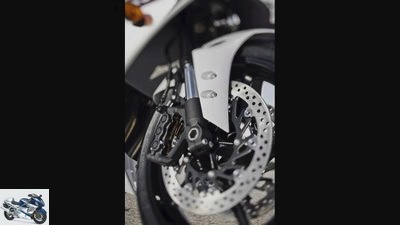
Yamaha
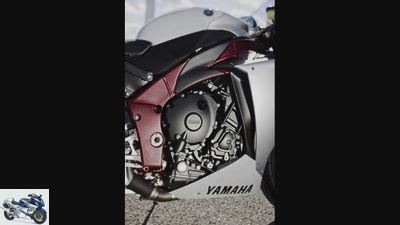
Yamaha
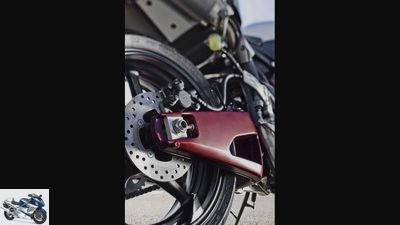
Yamaha
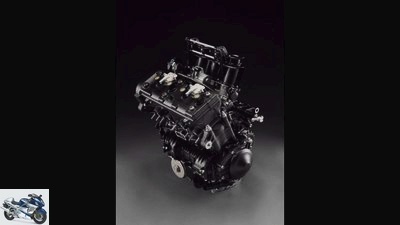
Yamaha
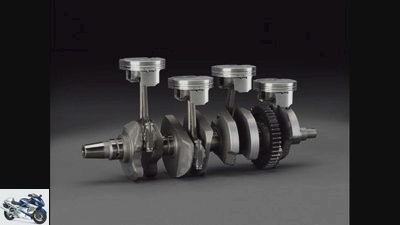
Yamaha
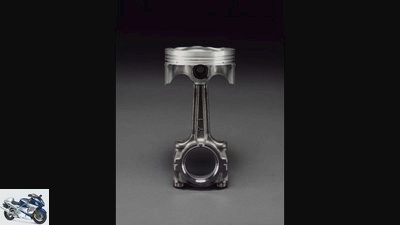
Yamaha
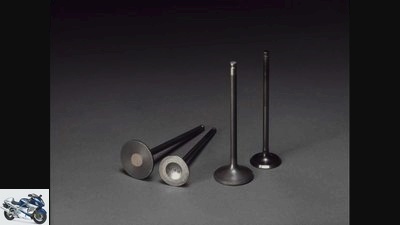
Yamaha
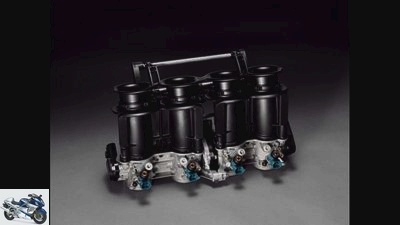
Yamaha

Yamaha
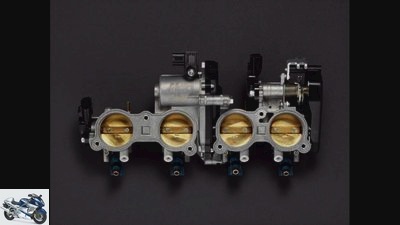
Yamaha
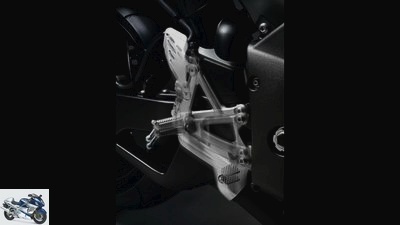
Yamaha
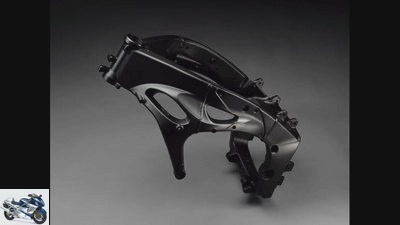
Yamaha
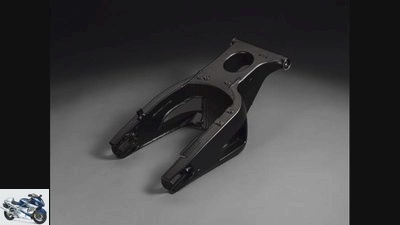
Yamaha
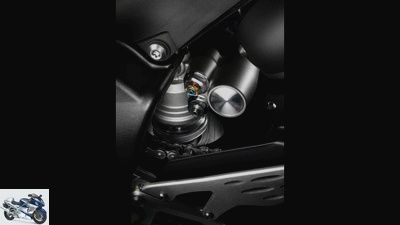
Yamaha
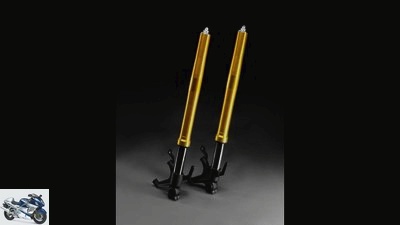
Yamaha
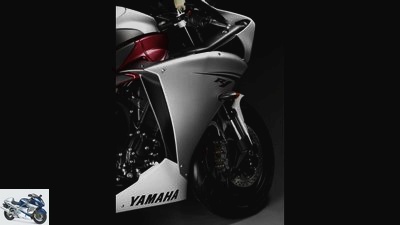
Yamaha
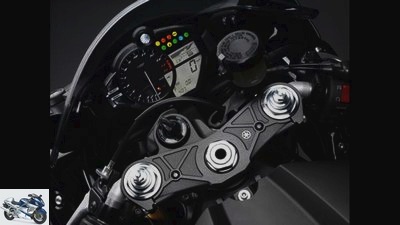
Yamaha
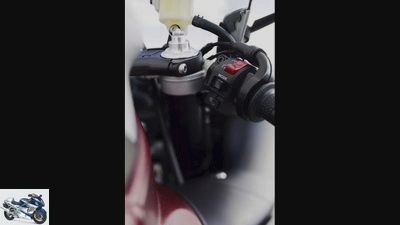
Yamaha
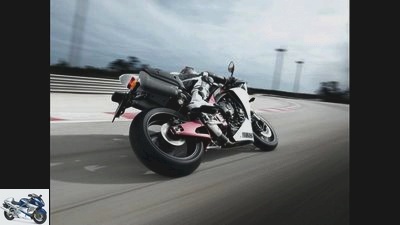
Yamaha
1/33
Yamaha YZF-R1
Drive: Four-cylinder in-line engine, 4 valves / cylinder, 134 kW (182 PS) at 12500 / min *, 116 Nm at 10000 / min *, 998 cm³, bore / stroke: 78.0 / 52.2 mm, compression ratio: 12.7 : 1, ignition / injection system, 45 mm throttle valves, mechanically operated multi-disc oil bath anti-hopping clutch, six-speed gearbox, G-Kat
Landing gear: Light alloy bridge frame, steering head angle: 66.0 degrees, caster: 102 mm, wheelbase: 1415 mm, upside-down fork, Ø fork inner tube: 43 mm, adjustable spring base, rebound and compression level. Central spring strut with deflection, adjustable in spring base, rebound and compression stage, spring travel from / h .: 120/120 mm
Wheels and brakes: Light alloy cast wheels, 3.50 x 17″/6.00 x 17″, Front tires: 120/70 ZR 17, rear: 190/55 ZR 17, first tires: Michelin Pilot Power, front “P.”, 310 mm double disc brake with six-piston fixed calipers at the front, 220 mm single disc with single-piston floating caliper at the rear
Measurements and weight: Length / width / height: 2090/775/1120 mm, seat / handlebar height: 820/840 mm, handlebar width: 650 mm, 214 kg fully fueled, v./h .: 52.3 / 47.7%
Rear wheel power in last gear: 117 kW (159 PS) at 263 km / h
Driving performance: Acceleration 0-100 / 150/200 km / h: 3.2 / 5.1 / 7.5 s, pulling power: 50-100 / 100-150 km / h: 4.0 / 3.9 s
Top speed: 285 km / h *
Consumption: Fuel type: Super, average consumption: 9.3 liters / 100 km, tank capacity (of which reserve): 18.0 / 3.2 liters, range: 194 km
Base price: 14895 Euro (plus ancillary costs)
* Factory specification
| Setup Yamaha YZF-R1 |
Power and torque diagram
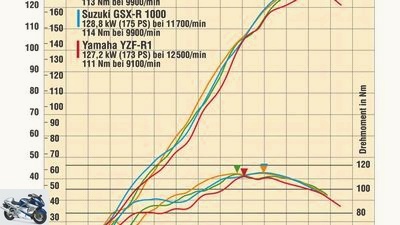
Power on the crankshaft, measurements on Dynojet roller dynamometer 150.
On the one hand, the PS test bench confirms the test impressions and, on the other hand, contradicts one point. The 1000s of the current generation are incredibly close to one another in terms of performance and also provide this relatively harmoniously up to the speed peaks – apart from the hole in the Kawasaki Ninja ZX-10R up to 4000 rpm, which is easy to get over on the racetrack.
If you were to trace the line of a liter hum with a thick felt-tip pen, you would have covered them all. So very tight box. But nobody would have bet that the Yamaha YZF-R1 would be the weakest candidate over almost the entire rev range. However, it is translated briefly and thus achieves the best pull-through values. The bearish increase in torque that the Suzuki GSX-R 1000 delivers even at low speeds is also astonishing.
HP rating Honda Fireblade
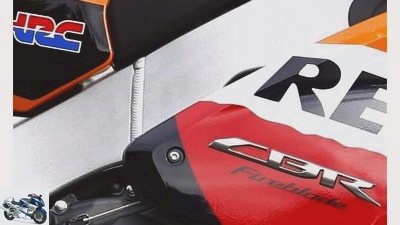
fact
Honda Fireblade.
Honda Fireblade
Drive – 4 stars: The blade motor delivers steady thrust and a lot of pressure, but it goes very hard on the gas, which costs one point. The transmission is great, as is the AHK.
Chassis – 5 stars: The rear seems nervous at times, but the ABS and the undisputed best steering damper make up for it. The rest is cream.
Ergonomics – 5 stars: No other is as compact as the Blade. She has everything for racing without bothering her driver. Feeling good with a full bottle – great!
Driving fun – 4 stars: The Blade could be an all-round carefree package with the highest fun factor if it didn’t hit the gas so hard. So she steps on the fun brakes.
PS judgment – 18 stars, 1st place: The masterbike winner from 2008 is still at the top in 2009 – now even with a sports ABS that can give chickens real wings
HP rating Kawasaki Ninja ZX-10R
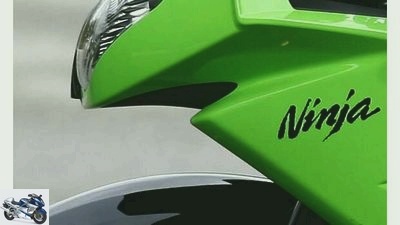
fact
Kawasaki Ninja ZX-10R.
Kawasaki Ninja ZX-10R
Drive – 4 stars: This engine is at home on the racetrack – but only here. It runs a bit rough, but has endless smoke around the top. The AHK is formidable.
Chassis – 4 stars: The Ninja is a bit slower than the competition, demands more effort from its driver and goes a little further. The brake: amazing.
Ergonomics – 4 stars: Still a big motorcycle that makes its rider a little too inactive. Nevertheless, you feel at home on the slopes with the ZX-10R.
Driving fun – 4 stars: The green one fits the racetrack like a fist on the eye. If you like it a bit more rustic, but want to show off with horsepower – please!
PS judgment – 16 stars, 4th place: Completely ungrateful, this fourth place, because the ZX-10R is full of music. Marginally better manners and she would have what it takes to win.
HP rating Suzuki GSX-R 1000
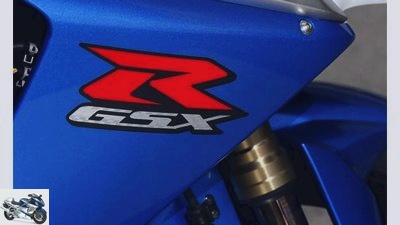
fact
Suzuki GSX-R 1000.
Suzuki GSX-R 1000
Drive – 5 stars: The new motor is a fast breeder: pressure, pressure, pressure – and the GSX-R also takes on the smoothest gas. The transmission still works.
Chassis – 4 stars: The pumping stern costs a point. The rest is absolutely solid, the brakes have improved. The handling is very agile.
Ergonomics – 4 stars: Very compact in itself; nevertheless, the GSX-R is very wide between the driver’s legs. The handlebar stubs pull the pilot far down.
Driving fun – 5 stars: A touch of 600 lightness with the powerful force of the liter bomb results in a base with the license to grin continuously.
PS judgment – 18 stars, 1st place: Successful premiere in a new shape and with new technology: after the HP country road victory, now the queen of the racetrack. Now the world title!
HP rating Yamaha YZF-R1
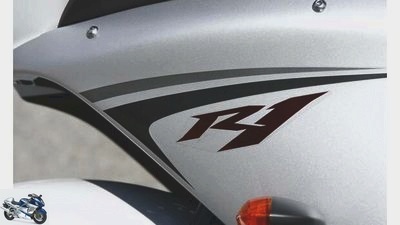
fact
Yamaha YZF-R1.
Yamaha YZF-R1
Drive – 4 stars: The R1 is unique in character and plays the emotional ace. The throttle response costs sympathy, and a little bit the 173 hp – sorry.
Chassis – 4 stars: Responsiveness, stability and stoppers are unbeatable. When things get tight, the weight counteracts the otherwise impeccable handling.
Ergonomics – 4 stars: As a wanderer between the two worlds of track and country road, the Yamaha YZF-R1 has a little too much country road in its blood when it comes to ergonomics.
Driving fun – 5 stars: Disregarding the last groove, the R1 offers a unique motorcycle feeling – it has to be fun and win hearts!
PS judgment – 17 stars, 3rd place: A single star behind the top – something like this speaks for a top motorcycle. A bonus point for the concept would be earned; but unfortunately that is not possible.
Conclusion
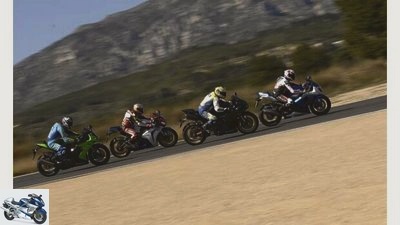
fact
Kawasaki Ninja ZX-10R, Honda Fireblade, Yamaha YZF-R1, Suzuki GSX-R 1000.
Conclusion: The 1000 test in 2009 is a very tight box, and despite all the criticism that the liter burners are getting: That is nagging at the very highest level. Regardless of which motorcycle the customer decides on, there is guaranteed not to be a bug. PS has great respect for such a broadly presented level of development. In addition to brand sympathy and emotion, the most important purchase factor is likely to be the price. There are actually countable differences there.
Standard tire Michelin Power One
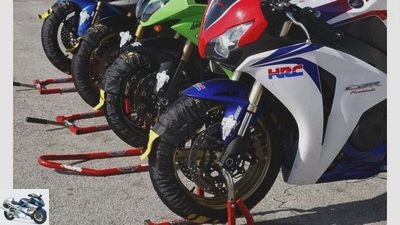
de Diego
Standard tire when heating up: the Michelin Power One.
For better comparability in the test, we gave the four test subjects uniform tires. Our choice fell on the new Michelin Power One, which replaces the Power Race. At the back we always drew the specification “B.” with a hard tread in the middle and a medium-soft flank, the front came the “V” to use (slightly softer edge); Air pressures: front 2.1 bar, rear 1.5 bar.
The testers were completely impressed by the grip of the tires and the stability. Without any significant momentum when braking, the Power One also provided nimble handling. The shelf life was good. Even when chasing times with a moderate outside temperature of 12 ° C, the Power One still did a decent job with the eighth and last driver.
Fortunately, the tire builds up temperature quite quickly. This was revealed by four of the eight test machines that rolled to the start without tire warmers and with only one warm-up lap for the time trial.
Related articles
-
Honda CBR 600 RR, Kawasaki Ninja ZX-6R, Suzuki GSX-R 600, Triumph Daytona 675, Yamaha YZF-R6
Jahn 15th pictures Honda 1/15 For the model year 2009 Honda presents a facelifted CBR 600 RR. The well-known 600 cubic four-cylinder has been trimmed for…
-
Jahn 31 pictures Photos: fact / Jahn 1/31 Honda Fireblade, Kawasaki Ninja ZX-10R, Suzuki GSX-R 1000, Yamaha YZF-R1, Ducati 1198S, KTM 1190 RC8 R and…
-
Concept comparison: Honda Fireblade, KTM 990 Super Duke R, Suzuki GSX-R 600, Yamaha FZ6
Gargolov motorcycles Concept comparison: Honda Fireblade, KTM 990 Super Duke R, Suzuki GSX-R 600, Yamaha FZ6 Concept comparison: Honda Fireblade, KTM 990…
-
fact motorcycles Comparison test: Honda CBR 600 RR, Kawasaki ZX-6R, Suzuki GSX-R 600, Triumph Daytona 675, Yamaha YZF-R6 Comparison test: Honda CBR 600…
-
Comparison test Ducati Monster 1200 S, Honda Fireblade, Kawasaki Z 1000 SX, Suzuki GSX-S 1000 F
jkuenstle.de 27 pictures jkuenstle.de 1/27 The disguised Suzuki GSX-S 1000 F has to prove itself in the field of competitors. jkuenstle.de 2/27 Nice is…
-
Comparison test Ducati 1098S, Honda Fireblade, KTM 1190 RC8, Triumph Daytona 675, Yamaha YZF-R6
Jahn motorcycles Comparison test Ducati 1098S, Honda Fireblade, KTM 1190 RC8, Triumph Daytona 675, Yamaha YZF-R6 Comparison test Ducati 1098S, Honda…
-
Honda CB 1000 R, KTM 690 Duke R, Suzuki GSX-R 750 and Yamaha MT-09 in the test
fact 23 pictures fact 1/23 Forget game consoles! The real action takes place on the diverse country roads of the republic. In this crossover test, four…
-
Big bikes from Honda, Suzuki, Kawasaki and Yamaha
archive counselor Used purchase Big bikes from Honda, Suzuki, Kawasaki and Yamaha Buying advice: big bikes The big bike generation from 1984 Content of…
-
Middle class bikes from Yamaha, Kawasaki, Suzuki and Honda
fact 27 pictures fact 1/27 Comparison of mid-range motorcycles from Yamaha XJ6 Diversion F, Kawasaki ER-6f, Suzuki GSX 650 F and Honda CBF 600 S. fact…
-
Comparison test: Honda CBF 1000 Silverline, Suzuki Bandit 1250 S, Yamaha FZ1 Fazer
Jahn 22nd pictures Honda 1/22 Honda CBF 1000 Honda 2/22 Honda CBF 1000 Zdrahal 3/22 Presentation at the fair in Paris. Honda 4/22 Honda CBF 1000 Honda…